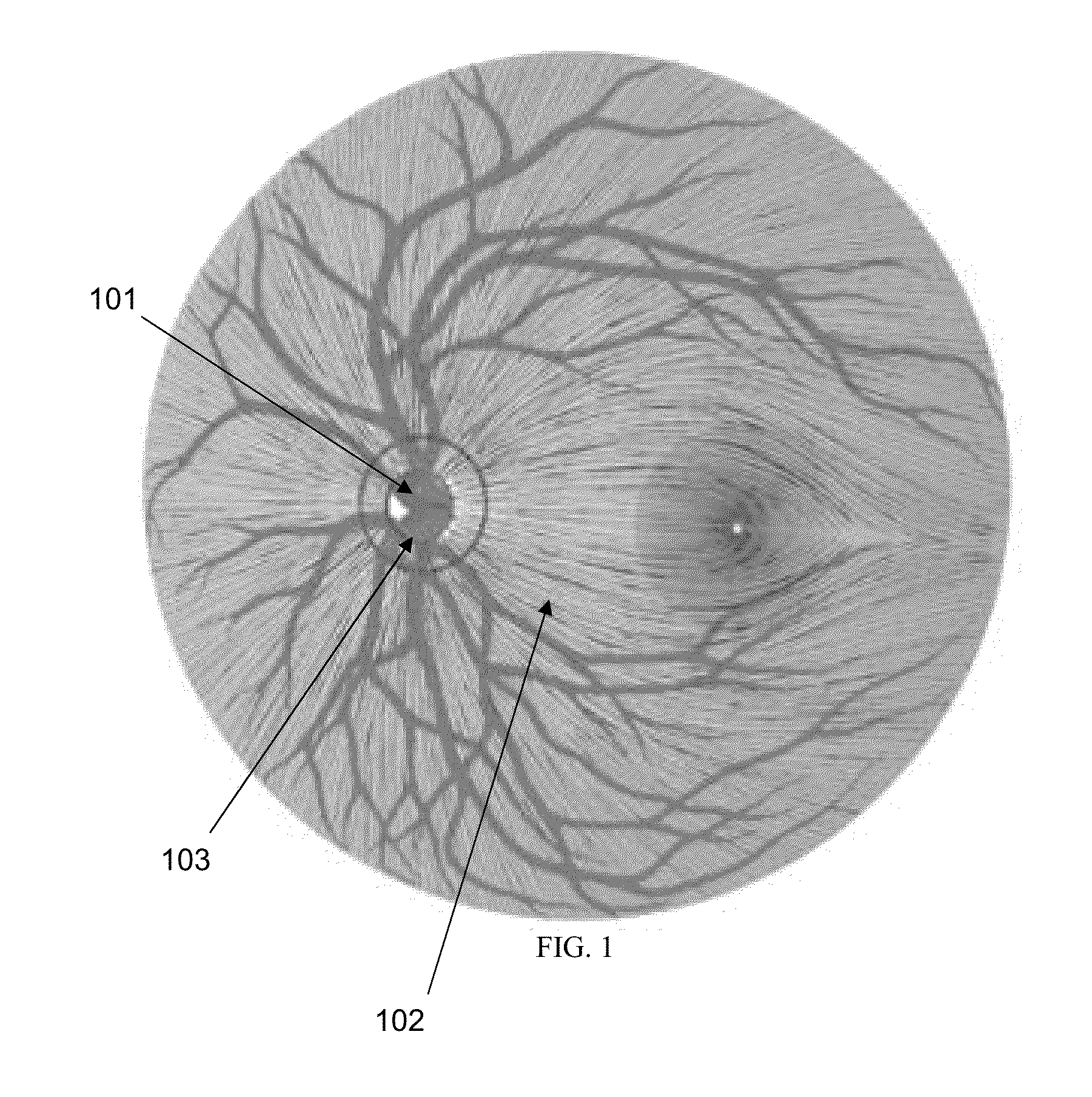Automated analysis of the optic nerve head: measurements, methods and representations
a technology of optic nerve and head, applied in the field of optic nerve head structure analysis, can solve the problems of difficult to repeat measurements, impede the clinical utility of neuroretinal rim measurements, and difficult to see disc margins in fundus images
- Summary
- Abstract
- Description
- Claims
- Application Information
AI Technical Summary
Benefits of technology
Problems solved by technology
Method used
Image
Examples
Embodiment Construction
[0032]Embodiments of the current invention can be used to perform analysis of the Optic Nerve Head (ONH), particularly the neuroretinal rim, of a patient using 3D imaging data containing tomographic image data. As discussed above, since nerve fiber loss will manifest itself as thinning at the neuroretinal rim as any retinal nerve fiber belongs to that particular landmark, an objective and accurate structural measurement of the neuroretinal rim is central to disease management and diagnosis. By measuring the nerve fibers at the neuroretinal rim, all the nerve fibers that exit the eye are sampled. One can think of an analogy of many ropes coming together, radially, to pass through a single hole. The further away from the optic nerve head, the less concentrated the nerve fibers are (see FIG. 1). As the ropes, or fibers, converge, they can no longer lie in the same plane and must bundle up and over each other. In measurements of the neuroretinal rim, it would be ideal to simply count th...
PUM
 Login to View More
Login to View More Abstract
Description
Claims
Application Information
 Login to View More
Login to View More - R&D
- Intellectual Property
- Life Sciences
- Materials
- Tech Scout
- Unparalleled Data Quality
- Higher Quality Content
- 60% Fewer Hallucinations
Browse by: Latest US Patents, China's latest patents, Technical Efficacy Thesaurus, Application Domain, Technology Topic, Popular Technical Reports.
© 2025 PatSnap. All rights reserved.Legal|Privacy policy|Modern Slavery Act Transparency Statement|Sitemap|About US| Contact US: help@patsnap.com



